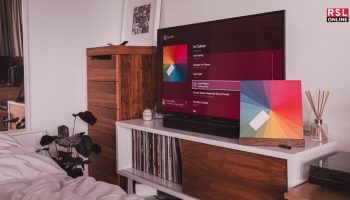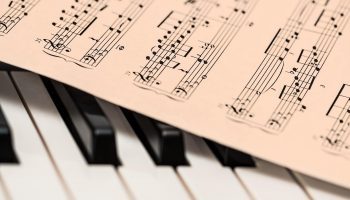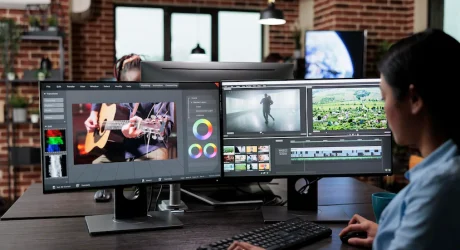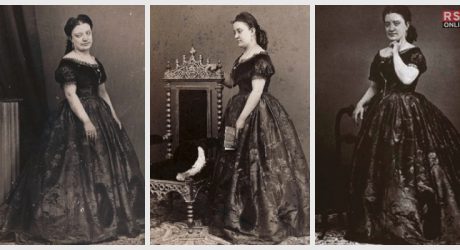Music is undoubtedly one of the best things that we create. There is literally a genre for every mood and every feeling. If you like music and want to know more about it, you must have wondered: How do you make music?
Don’t worry, my friend— you are not the only one! I am not ashamed to say that I have tried as well.
And if there is one thing that I have learned in the process, it is that you do not have to be afraid. It does not matter when or how you start the musical journey. All that matters is that you start!
In this blog, I will explain exactly how you can make music, even as an amateur. So, hold on to your seats for this rollercoaster ride…
Making Music: Is Talent All That You Need!

Whether you’re an eager amateur or a naturally skilled musician, making music is an art form that welcomes all.
Talent can undoubtedly give people an advantage, enabling them to learn skills more quickly or instinctively comprehend musical concepts.
But music’s true beauty is not limited to the gifted; it’s for everyone, which makes it joyful. And probably that is the reason why people are so divided on the debates regarding autotune!
A lot of amateur musicians create music for enjoyment. Learning an instrument, comprehending music theory, or even playing around with sounds can be quite satisfying.
It’s a method to express oneself, relax, and connect with others. Anyone who has a passion for music can begin their adventure with the abundance of resources that are currently available, including community classes, apps, and online tutorials.
‘Making music’ is also a very broad concept. It encompasses more than just making records and giving live performances.
It can be as easy as creating beats on a digital audio workstation, joining a community chorus, or even strumming a guitar in your bedroom.
These performers are all excellent and legitimate ways to interact with music. The amateur music scene is actually very diverse and vibrant.
Amateurs can share their love of music on a plethora of platforms, from open mic nights to garage bands. Occasionally, a novice’s unadulterated, unrefined sound offers a novel viewpoint to the music industry.
Getting Into Music Production

Although it can be intimidating at first, the process of producing music is both demanding and rewarding. It involves writing, arranging, recording, mixing, and mastering a song from beginning to end.
While the knowledge and abilities needed for each level vary, anyone who is committed to the process may pick it up and enjoy it.
Writing comes first. Writing the melody, chords, and words is the key. This can be as easy as finding chords that fit a melody by humming it, or it can be as difficult as creating an entire symphonic score.
The secret is to allow your imagination to run wild and not stress over perfection right away.
The arrangement process involves selecting which instruments will perform what roles and how they fit together. It resembles a jigsaw puzzle in which every piece adds to the final image.
Not much equipment is needed; virtual instruments on a computer can yield some impressive results.
Recording involves capturing the song’s performance. You can accomplish this using simple equipment at home or in a professional studio. The aim is to obtain the optimal sound for every instrument and voice.
Mixing is the process of combining all the various tracks. To produce a unified sound, levels, panning, and effect additions are used. Although many tools can assist novices, this stage might be challenging.
Finally, mastery guarantees the song is prepared for release and sounds great on all playback systems. Although it’s a minor process, a track needs to sound professional.
Despite the complexity of each stage, it’s a learning process that gets better with repetition.
Thanks to the abundance of guides and online forums available nowadays, even novices can create music they’re proud of.
So, is producing music challenging? Though it’s also quite approachable and incredibly fulfilling, it can be.
Everything You Need to Know About How to Make Music?

When it comes to creating music, there are several things that you can do. Similar to podcasting software, there are software that you might use to create your music. You may also record acapella and post them online.
The choice is yours!
But, just for the record, if you were searching for the easiest way of creating music as an amateur, I have you covered! Here is a step-by-step guide on how to make music:
1. Focus on Getting the Right Equipment

When it comes to mind songs, there are a few things that you will need. For instance, you need to have a computer or a laptop. This is really essential. With the help of this one, you will be able to create your own music.
Secondly, and this is a very important element, you need to have the right DAW. What’s that? Well, a Digital Audio Workstation (or DAW) is a program that lets you record, edit, and mix the music you create. It is the main software with which you can produce music part by part.
There are many DAWs available. Some are even free, like GarageBand for Apple users. You can also try out Ableton Live or Studio One.
Then, you need to take care of the sounds and plugins. While your DAW helps you create music while providing the virtual environment, you will need the sounds and plugins to create the audio.
Additionally, you will also need to have certain physical instruments and hardware. With these, you will be able to incorporate the talent that you want to showcase. However, these are really optional.
2. Acquire Fundamental Knowledge

You see, just getting the right tools for making music will not work. Think about it— will you be able to cook something if you don’t even know the spices?
This is why getting acquainted with the DAW and understanding what it is and how it works is important.
For instance, the one that I used has some features. Now, these can be different from the DAW that you are using. However, the basics remain the same. Let me help you out with those.
First things first. You need to take a look at the arrangement view. This is the one that appears right when you open the software by default.
The next one is your MIDI editor or the piano roll/ This is the place where you will get to compose your own beats, melodies, and more.
Many internet tutorials explain how to use it. Just become accustomed to using the essential features; don’t stress about learning them all at once.
3. Begin with a Beat

Most songs have a “beat,” or a basis of rhythm. With your DAW, you can make one by utilizing software instruments or drum machines. Experiment with several patterns until you discover one that suits your taste.
Most composing ideas can be divided into three basic categories when examining the components of music “on paper”: rhythm, melody, and harmony. There is no conflict between these three components.
Melodies and chord progressions, for instance, have a rhythmic quality by nature. However, the rhythmic energy of a track is driven by certain non-melodic and non-harmonic percussion sections (possibly played by a drum kit), which we refer to as the beat informally (not to be confused with the concept of the same term in music theory).
4. Record Your Music

Making music recordings is similar to preserving a fleeting moment. A computer running the Digital Audio Workstation (DAW) application is required.
Like a digital tape recorder, that is. Next, you’ll need an audio interface, a box that links your microphone to your computer, and a microphone to record your voice or instrument. After adjusting your microphone, connect it to your computer using the interface.
You start by making a new track in the DAW, hit record, and begin to play or sing. It resembles taking a picture of your song.
5. Mix Your Tracks

You might have been worried about how these parts worked together when you recorded them for your own song. Maybe one portion was too strong and loud.
Alternatively, perhaps you wished to modify your sound’s timbre or sonic character in some way. Mixing is an important step that we haven’t yet covered in our discussion on how to compose music.
While composition is all about arranging catchy rhythms, creating compelling chord progressions, and crafting catchy melodies, mixing concentrates on the more elusive parts of sound, such as creating a coherent, thrilling, and clear overall sound.
You’ll need to employ audio effects plugins together with the volume and panning faders on your tracks for this operation. We go over the typical uses for each of them in our mixing guide below, along with some things to consider when you mix your own music.
6. Share Your Music

Think about it: how will people know that you have created a song or music unless you promote it on the required platforms? That is the reason why you MUST share the music that you have created.
Start with SoundCloud and Bandcamp websites, for example. To reach a wider audience, you can also use YouTube or Spotify. It’s similar to opening a window to let your neighbors hear your music inside your home. All it takes is uploading your song to the internet for anyone to hear it.
If they enjoy it, they may recommend it to their friends, which will spread the word about your music. It’s an enjoyable method to express your creativity to others.
Ending it on a Pitch Perfect Note!
If you want to know how to make music as an amateur, I hope this blog has helped you. If you have any other queries related to this, please feel free to let me know.
You can reach the bottom of the page by scrolling down. Then, leave your comments and queries in the box below. I will answer them all.
You May Like Also:




























